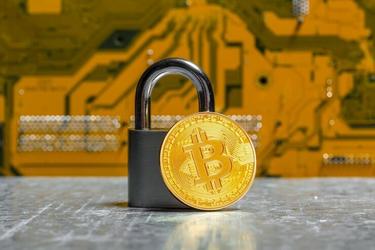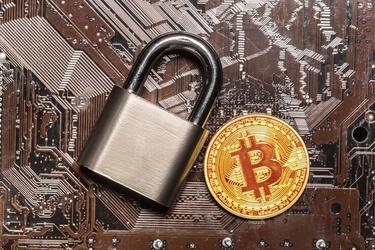Security tokens and STOs
Security tokens[1] and Security Token[2] Offerings (STOs) represent a novel fusion of traditional financial securities with blockchain[3] technology. This innovative approach to investment offers a more regulated, secure, and efficient method of raising capital and investing in assets. Unlike Initial Coin Offerings (ICOs), which are largely unregulated, STOs provide a framework that aligns with existing securities laws[4], offering protections for investors and legitimacy for issuers.
Understanding Security Tokens
1. Concept: Security tokens are digital assets that represent ownership or an interest in real-world assets, such as real estate, companies, or art. These tokens are issued on a blockchain, and they adhere to regulatory standards, making them a bridge between traditional finance and the digital asset world.
2. Advantages: The tokenization[5] of assets offers numerous benefits, including improved liquidity[6] of traditionally illiquid assets, fractional ownership[7], faster and cheaper transactions, and enhanced transparency[8] and security through blockchain technology.
3. STOs Explained: Security Token Offerings (STOs) are a method of fundraising that involves the sale of security tokens to investors. They are similar to ICOs but are designed to comply with securities regulations, offering a safer and more regulated investment opportunity.
4. Regulatory Considerations: The regulatory framework[9] for STOs varies by jurisdiction but generally requires compliance[10] with securities laws, including registration with financial authorities and disclosure requirements. This compliance is crucial for the protection of investors and the integrity of the market.
5. Future Outlook: The market for security tokens and STOs is expected to grow as more assets are tokenized and as the regulatory environment[11] evolves. This growth will likely lead to broader adoption, more innovative investment products, and greater integration with the traditional financial system.
Key Facts
- Security tokens represent real-world assets on the blockchain, offering regulatory compliance[12] and investor protection.
- STOs provide a regulated alternative to ICOs for raising capital, aligning with securities laws.
- Tokenization brings liquidity to traditionally illiquid assets and allows for fractional ownership.
- The regulatory landscape[13] for security tokens and STOs is evolving, with varying requirements across jurisdictions.
- The future of security tokens and STOs includes broader adoption and integration with traditional finance.
Security tokens and STOs
Security tokens and Security Token Offerings (STOs) represent a novel and rapidly evolving area within the financial and blockchain sectors. These digital assets and the mechanisms for their issuance are reshaping the landscape of investment and compliance, merging the innovative capabilities of blockchain technology with the regulatory frameworks that govern traditional securities. This integration offers a promising avenue for raising capital while ensuring investor protection and market integrity.
Introduction to Security Tokens
Security tokens are digital assets that represent ownership or an interest in real-world assets and are subject to regulatory governance. Unlike cryptocurrencies[14] or utility tokens, which are often used as a medium of exchange[15] or to access a specific platform, security tokens are explicitly linked to underlying assets such as real estate, stocks, or bonds. They leverage blockchain technology to digitize securities, making transactions more efficient, transparent, and secure.
Understanding Security Token Offerings (STOs)
STOs are the process through which security tokens are issued and distributed to investors, akin to traditional securities offerings but with a digital twist. STOs are designed to comply with regulatory standards, offering a safer and more secure investment platform compared to Initial Coin Offerings (ICOs), which have been criticized for their lack of regulatory oversight[16] and association with fraud and market manipulation. By adhering to securities laws, STOs provide a framework for tokenized assets to be traded on regulated platforms, ensuring investor protection and legal compliance.
Benefits of Security Tokens
Security tokens offer numerous advantages over traditional securities, including enhanced liquidity, lower issuance and transaction costs, and improved market efficiency. The digitization of securities facilitates fractional ownership, allowing investors to purchase smaller stakes in assets that were previously too costly or illiquid. Blockchain technology ensures transparency and immutability[17] of transactions, enhancing trust among participants.
Regulatory Landscape for STOs
Navigating the regulatory landscape is a critical aspect of STOs. Different jurisdictions have varying definitions and regulations for security tokens, affecting how STOs are conducted and the types of investors who can participate. Regulatory compliance is paramount in STOs, with issuers required to adhere to Know Your Customer (KYC) and Anti-Money Laundering (AML) guidelines, among other securities laws. The evolving regulatory framework continues to shape the development and adoption of security tokens.
Challenges and Considerations for STOs
While STOs offer significant potential, they also face challenges, including regulatory uncertainty[18], technical complexity, and market adoption. Issuers must navigate complex legal requirements across different jurisdictions, which can be costly and time-consuming. Additionally, the technology underlying security tokens is still developing, raising concerns about security, interoperability, and scalability[19].
Future of Security Tokens and STOs
The future of security tokens and STOs is promising, with ongoing advancements in blockchain technology, regulatory clarity[20], and market infrastructure. As the ecosystem matures, security tokens are expected to become a more integral part of the global financial system, offering a novel approach for asset tokenization and investment. The continued integration of digital assets into regulatory frameworks and financial markets is likely to spur innovation, opening new opportunities for investors and issuers alike.
In conclusion, security tokens and STOs are at the forefront of bridging the traditional financial world with the innovative potential of blockchain technology. By addressing the legal and regulatory challenges and leveraging the benefits of digitization, security tokens are poised to redefine investment mechanisms, offering a secure, efficient, and compliant pathway for capital formation and asset trading.
- Security Tokens — Digital tokens that represent ownership or an interest in real-world assets, subject to regulatory compliance.
- Token — A unit of value issued by a project, representing various assets or utilities on a blockchain.
- Blockchain — A decentralized digital ledger recording cryptocurrency transactions across multiple computers.
- Securities Laws — Laws regulating the offer and sale of securities to protect investors against fraud, requiring transparency and disclosure.
- Tokenization — The process of issuing a blockchain token that digitally represents a real tradable asset.
- Liquidity — The ease with which a cryptocurrency can be bought or sold in the market without affecting its price.
- Fractional Ownership — A method of asset ownership where multiple parties can own a portion of the asset, enhancing liquidity and accessibility.
- Transparency — The characteristic of blockchain technology that allows all transactions to be visible and verifiable by all network participants.
- Regulatory Framework — A set of regulations and guidelines established by authorities that govern the operation of financial markets and instruments.
- Compliance — The act of adhering to legal standards and regulations established by governmental bodies and regulatory agencies, particularly in the context of financial operations and transactions involving cryptocurrencies.
- Regulatory Environment — The legal and regulatory framework within which ICOs must operate, varying significantly by country.
- Regulatory Compliance — Adherence to laws, regulations, guidelines, and specifications relevant to business processes.
- Regulatory Landscape — The set of laws, guidelines, and policies that govern the use of virtual assets across different regions.
- Cryptocurrencies — Digital or virtual currencies that use cryptography for security and operate on a decentralized system, unlike traditional currencies.
- Medium of Exchange — An intermediary instrument used to facilitate the sale, purchase, or trade of goods between parties.
- Regulatory Oversight — The supervision by authorities to ensure that market participants comply with legal and ethical standards.
- Immutability — The characteristic of blockchain technology that ensures once data is recorded, it cannot be altered or tampered with, providing a secure and tamper-evident record of transactions.
- Regulatory Uncertainty — The lack of clear regulatory guidelines and frameworks governing the use and trading of virtual assets.
- Scalability — The ability of a blockchain network to handle a large number of transactions quickly.
- Regulatory Clarity — The evolution of legal frameworks to better accommodate and govern blockchain technology, which is expected to encourage wider adoption and innovation across various sectors.



